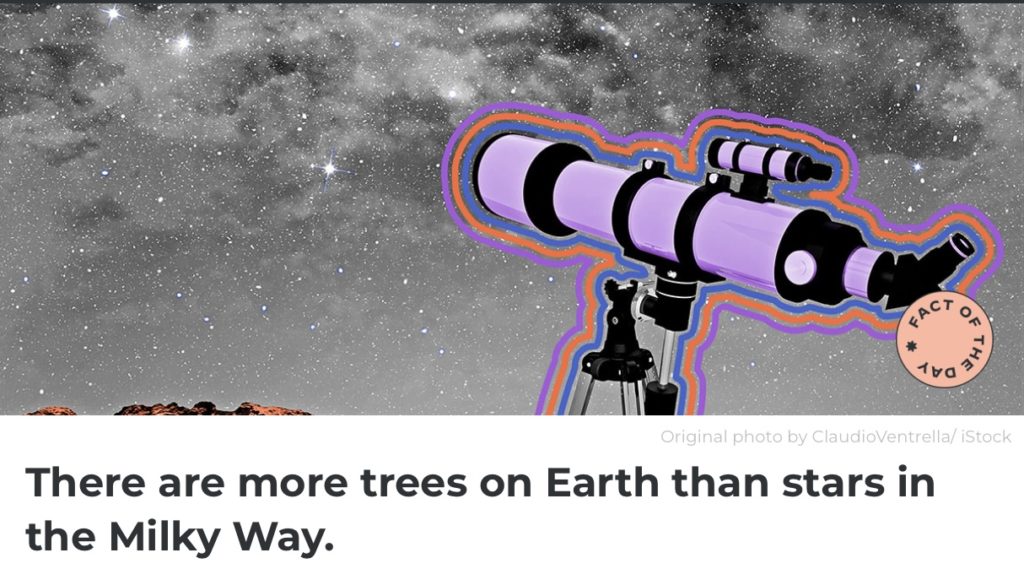Astronomer Carl Sagan wrote in his 1980 book Cosmos that there were more stars in the universe than grains of sand on beaches on Earth — a statement that’s both wondrous and impossible to prove. But some scientists pondering similar ideas believe that there may be more trees on Earth than stars in the Milky Way galaxy. The theory stems from a 2015 study that attempted to determine how many living trees could be found on the planet, by estimating the number of trees living in different environments. Tropical and subtropical forests appear to have 43% of the world’s tree population, nearly double that of frosty boreal forests found in places such as Canada, Russia, and Norway. Other regions, including the temperate biome (central Europe and the U.S. Northeast), generally have the fewest number of trees. The combined estimates per zone lead some scientists to believe that Earth is home to roughly 3 trillion trees. Compared to NASA’s estimate of more than 100 billion stars in the Milky Way, it appears that trees far outnumber the Milky Way’s sparkling orbs.
However, the scientific community acknowledges that we’ll likely never know the true number of stars in the sky or how many trees are rooted in the Earth, because there are too many factors at play. Astronomers can guess at the number of stars by observing how the galaxy rotates and calculating its mass, though not all stars are visible from Earth, and it’s impossible to count them individually to confirm the math. On Earth, humans cut down 15 billion trees annually but replace some, with an estimated 1.3 billion saplings produced in the U.S. each year in the hopes of balancing the count. After all, even if we have trillions of them, each tree on the planet is precious.

